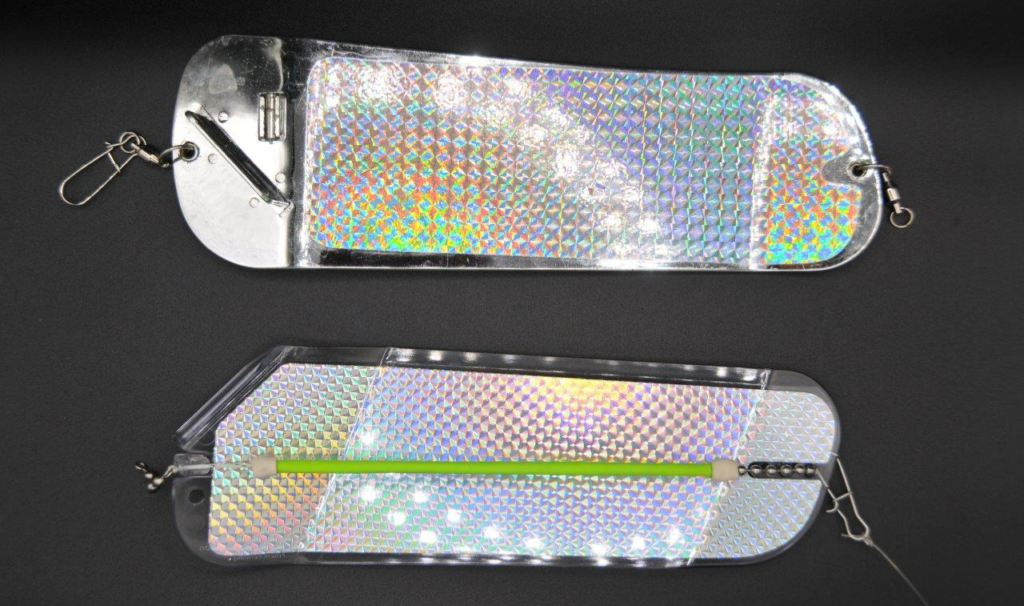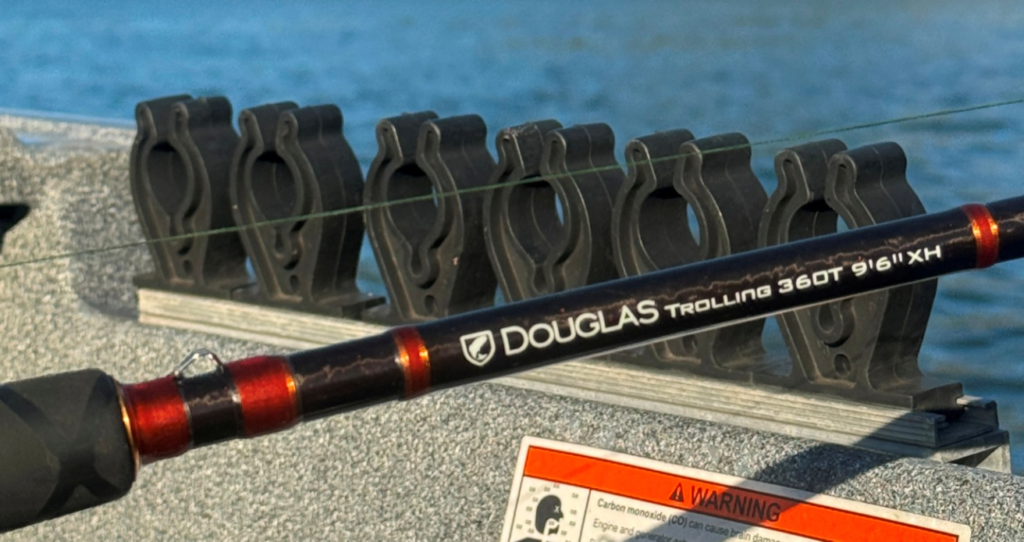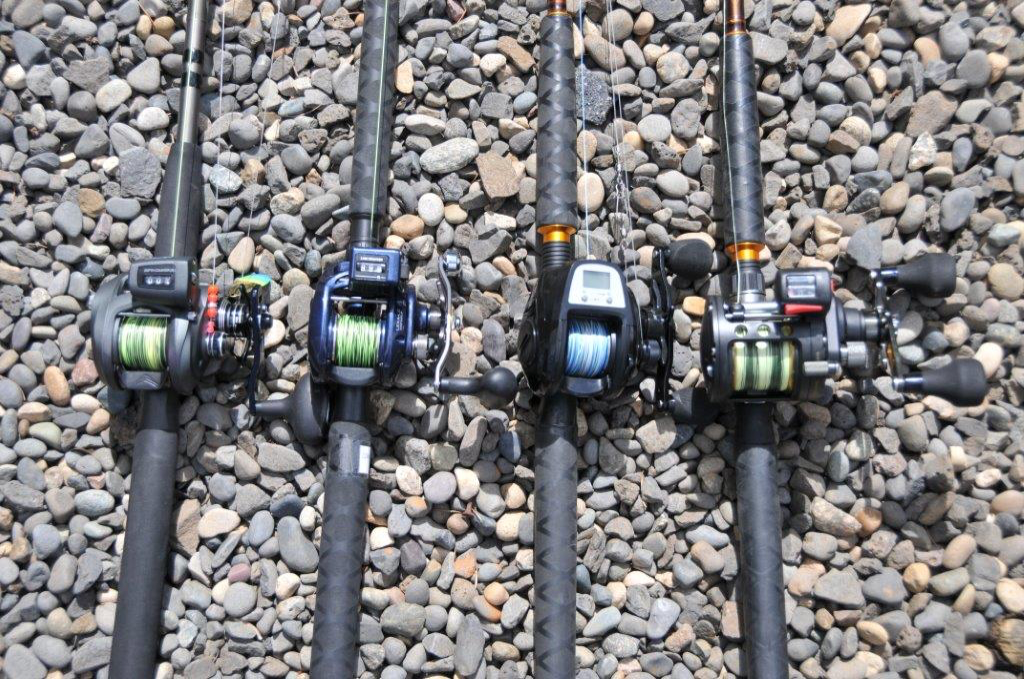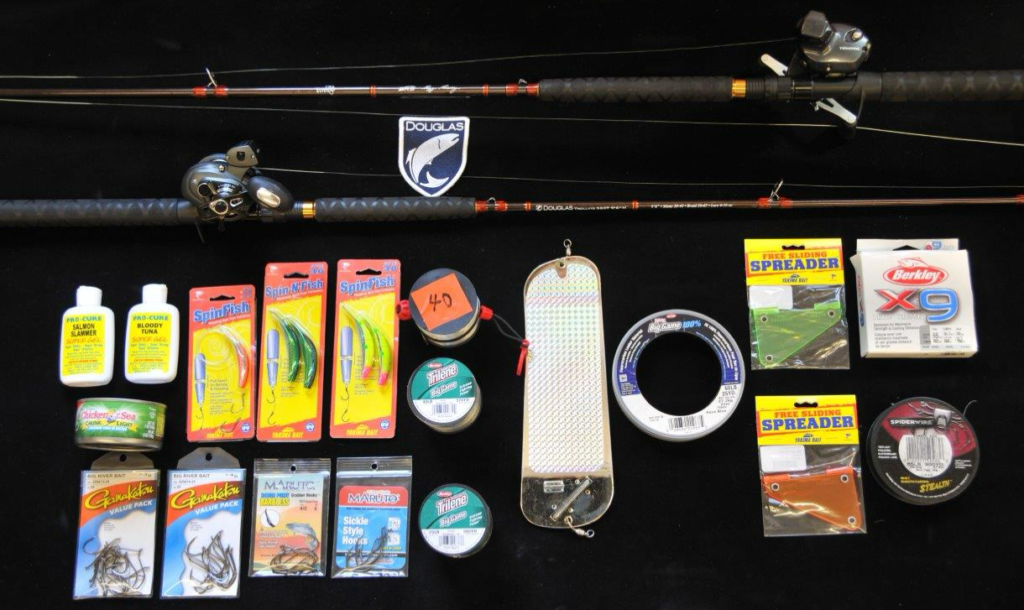By Buzz Ramsey
Pursuing salmon in the ocean off the Columbia River mouth has become an annual experience for me and friends where we chase salmon in advance of their migration into and up the Northwest’s largest river system. Fishing in the ocean out off the Columbia River mouth, and other west coast ports too, can produce easy limits of fat coho and chinook salmon during the summer months with July and August considered peak times. September can be a good month too, for late returning fish.

With a few trips planned to fish in the ocean off the mouth of the Columbia River, I’m already checking my gear to make sure I’m ready and you should too.
In case you don’t know, the fishing rods used when chasing ocean salmon have changed from somewhat of a hodgepodge of different lengths and actions to mostly 9′ 6″ and 10′ 6″ lengths heavy enough to handle the pull of eleven inch rotating/360 flashers, cannon-ball style sinkers that might weigh 4 to 24 ounces, and chinook salmon that can bounce the fish scale at 20 to 40 pounds or more.
The idea behind long fishing rods is to achieve as wide trolling swath as possible while avoiding tangled lines. You see, long rods help maneuver fast-moving fish around those of others that might not have reeled in fast enough to get out of the way. As such, with boats hosting four anglers along with a fifth operating the trolling motor, the rods deployed near the stern of the boat are 9’6″ in length while the anglers sitting ahead (closest to the bow of the boat) employ 10′ 6″ rod lengths.
It’s amazing how popular trolling baits and lures in combination with 11 inch rotating flashers (like those made by Pro Troll) have become when fishing salmon in the ocean, Buoy 10, in the Columbia River itself, Puget Sound, and the many estuaries and large rivers up and down the west coast. The effectiveness of these flashers is undeniable. Yes, eleven inch rotating flashers pull harder than triangular flashers like a Fish Flash, which still have their place – mostly when targeting spring chinook in cool water, ocean coho, and when big tide swings create strong currents inside Columbia River mouth (referred to as Buoy 10) that make getting the right trolling speed for 360’s difficult.
What’s unique about rotating flashers and why they work so well is that they impart a pulsating action into lures and baits towed behind them. So, not only do rotating flashers produce flash and vibration that attracts salmon, but they impart a pulsating action into lures and baits that salmon readily respond to – it’s like teasing a cat with a ball and string.

When it comes to trolling sinkers what most anglers do, including me, is to run heavier sinkers on my front rods. My normal set up is to run 16 ounces of weight on the front rods and 12 ounces on the lines trailing out the back of the boat. How much weight you might need just depends on how deep the salmon are running.
Of course, due to the hard pull of big sinkers, I’ll go with 12 ounce cannon-ball style sinkers on my front rods and 8 or 10 ounces on the ones trailing out the back of the boat during the first few hours of daylight when most ocean salmon are feeding near the surface. As the fish go deep (due to them wanting to escape the daytime light intensity) I’ll switch to 16 ounces on my front rods and 12 ounce weights out the stern of my boat. It’s when targeting chinook in deep water that I might go with cannon-ball sinker combinations of 24 and 16 ounces. You should also know than many anglers, when targeting chinook in deep water, employ downriggers to get down.
The use of 11 inch rotating flashers, cannon-ball style sinkers, the catching of hard charging salmon that in the case of chinook might weigh 20 to 40 pounds, along with getting a wide trolling swath, and be able to maneuver fish around other lines and motors, not to mention the distance from weight to flasher (24 inches) and from there to the bait or lure (30 to 40 inches) makes long fishing rods the right tool for the job. The only exception is for the person operating the trolling motor as rods fished straight out the back of the boat don’t have to be over 9 feet in length – although many anglers stick with the longer ones.
And while there are rods of these lengths and of similar actions in the current lineup of Douglas quality fishing rods, Fred Contaoi and I wanted to design the ultimate 360 trolling rod. A rod that would include features like durable soft-touch diamond “Easy Clean” shrink-wrap handles having solid fore-grips, trigger reel seats with double locking nuts that includes a reel seat extension that allows for regular and oversize bait-casting reels, durable “V” shaped oversize hook keeper, and forward leaning “Tangle Free” double foot rod guides.
What really motivated Fred and I was discovering the availability of an all-new light, yet durable composite “Titan Matrix” graphite material that will withstand the sometimes extreme pressure placed on 360 trolling rods. This allowed us to add not only the line test rating for monofilament and super-braid but the trolling/lure weights too.
The other consideration in the design of these fishing rods was to engineer the rod tip to flex when subjected to the pumping action rotating flashers produce as doing so can enhance the skip-beat action 360 flashers impart on trailing baits and/or lures. We were able to achieve this while maintaining a stiffer butt section that provides the lifting power needed when fighting a big salmon and steering one into a waiting landing net.

Here’s a list of the Buzz Ramsey Signature Series 360 Trolling Rods
#22360 BRS 360T 9’6″ Heavy “H” Mono 20-40, Braid 30-65, Lure 4 to 16 oz.
#22361 BRS 360T 9’6″ Extra Heavy “XH” Mono 25-50, Braid 40-80, Lure 8 to 24 oz.
#22362 BRS 360T 10’6″ Heavy “H” Mono 20-40, Braid 30-65, Lure 4 to 16 oz.
#22363 BRS 360T 10’6″ Extra Heavy “XH” Mono 25-50, Braid 40-80, Lure 8 to 24 oz.

When it comes to fishing line, the majority of anglers employ high-tech braid. Most spool 50 or 65 pound test super braid, which is way thinner than even 25-pound test monofilament and mostly eliminates the thought of an unexpected break off. This is something that can happen when using monofilament fishing line, especially if it has been heavily used and on the reel for more than one season. However, if you prefer mono, I would suggest picking a tough one like Berkley Big Game or Maxima in at least 25-pound test.

A tip when spooling up fresh line is to make sure it is spooled tightly on your reel spool, otherwise the line could knife into itself should you hook into a big salmon with too tight a drag. And although this can happen with monofilament line, it’s much more likely to occur when using super braid. If knifing does happen, it could mean no drag and result in a break off, especially if the fish you have on is a big one.
No matter how hard I try, I cannot get super line wrapped on my reels tight enough when first filling up. To get it spooled tightly, so there is no possibility of knifing, I attach the end of my freshly spooled line to a stationary object and walk 80 or more yards away and then reel myself back holding tension on the line with the rod tip as I go. Only after doing this, am I ready to tackle a big salmon with a reel filled with fresh super line.
Leader lengths are generally in the 30 inch range when fishing bait (like a “red” label size herring), bait-filled lures like SpinFish, Brad’s Mini Cut Plugs and small 3.5 spinner blades in combination with a Pro Troll flasher. If using a rotating flasher keep in mind that using too big of BLOGa bait or lure will inhibit the pulsating action that often triggers strikes from following fish. Most anglers employ 30 or 40 pound test leaders when using scent dispersing plugs like Brad’s or SpinFish, and 25 or 30 pound when snelling two hooked mooching leaders for use with whole or plug-cut herring.
Of course, I will be following the surge of salmon as they move into the Columbia River mouth (Buoy 10) and as they migrate through the lower and mid Columbia on their way to the hatchery or natural habitat that produced them, all while having my Douglas 360 trolling rods and rotating flashers and other equipment in hand.